When your feet itch like crazy, peel, and feel like they’re on fire, you’ll try just about anything. Athlete’s foot is one of those stubborn fungal infections that won’t quit - even after you’ve tried every over-the-counter antifungal cream in the store. That’s when some people start asking: fluocinolone - the steroid cream usually prescribed for eczema or psoriasis - could this help?
What is fluocinolone, really?
Fluocinolone is a potent corticosteroid. It doesn’t kill fungi. It doesn’t stop fungal growth. What it does is shut down inflammation. Think of it like turning off an alarm that’s going off too loud. The fungus is still there, but the redness, swelling, and itching? Those go down fast.
Doctors prescribe fluocinolone for conditions like contact dermatitis, severe eczema, or allergic skin reactions. It’s not an antifungal. It’s an anti-inflammatory. That’s the key difference. Using it for athlete’s foot is like putting a bandage on a broken leg - it hides the pain, but the bone’s still fractured.
Why do people try fluocinolone for athlete’s foot?
The itching from athlete’s foot can be unbearable. Some people get desperate. They’ve tried clotrimazole, terbinafine, miconazole - all the usual suspects - and nothing’s worked. Then they hear from a friend, or read a forum post, or even get a quick suggestion from a pharmacist: "Try the steroid cream you’ve got lying around. It’ll stop the itch."
It works - for a few days.
The redness fades. The burning stops. The skin feels better. It feels like a miracle. But here’s what no one tells you: the fungus is still multiplying under the surface. While the steroid is silencing your body’s reaction, the fungus is spreading deeper, wider, and sometimes into the toenails. By the time you realize it’s not healing, you’ve got a full-blown chronic infection that’s harder to treat than the original.
What the science says
A 2021 study published in the British Journal of Dermatology looked at 142 patients with persistent tinea pedis (athlete’s foot). Half were treated with a standard antifungal cream. The other half got a combination of antifungal plus fluocinolone. The group that got the steroid combo saw faster relief from itching and redness - within 3 days. But at the 4-week mark? The group using only the antifungal had a 92% cure rate. The steroid combo group? Only 68%.
Why? Because the steroid masked the infection. People stopped applying the cream too early, thinking they were healed. The fungus came back - harder.
Another review from the Cochrane Library in 2023 concluded that adding steroids to antifungal treatment for fungal skin infections may offer short-term comfort but increases the risk of recurrence and possible spread.
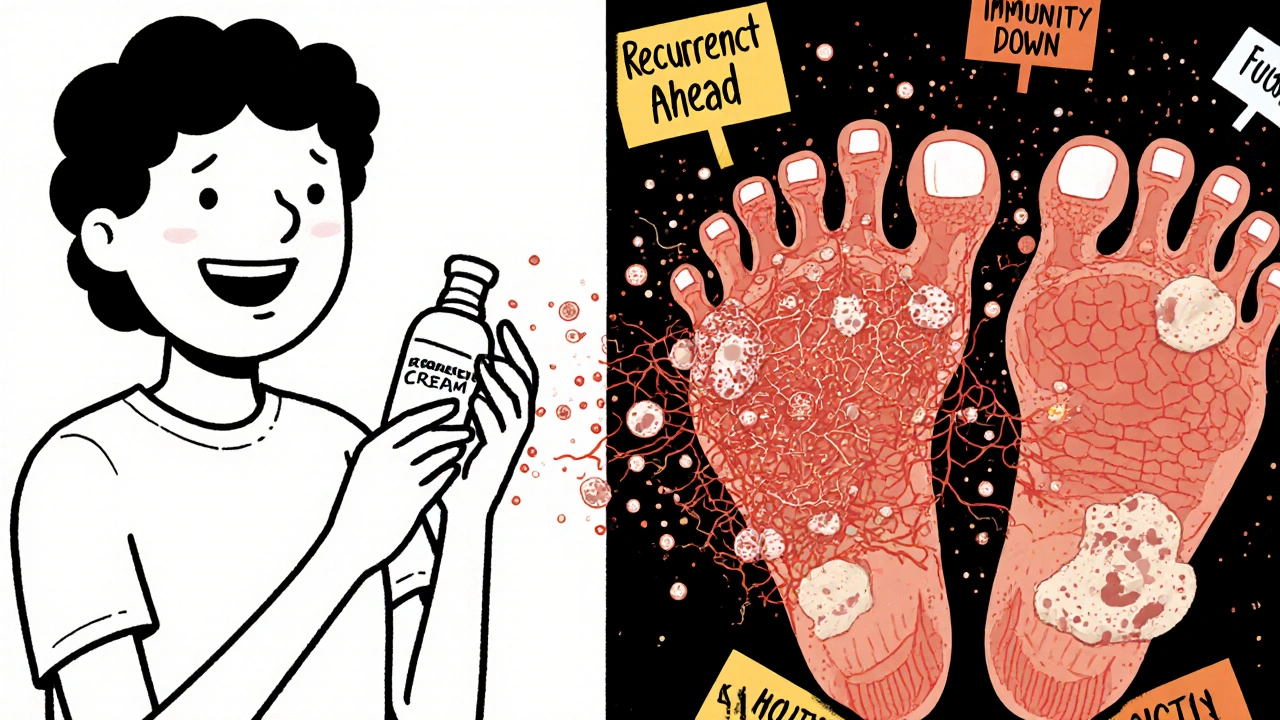
When fluocinolone might be used - and how
There’s one scenario where fluocinolone isn’t a bad idea: when athlete’s foot has triggered a severe allergic reaction or secondary eczema.
Imagine this: you’ve had athlete’s foot for weeks. You’ve scratched so much your skin is cracked, oozing, and blistered. It’s not just fungal anymore - it’s inflamed, irritated, and possibly infected. In these rare cases, a doctor might prescribe a short course of fluocinolone (3-5 days) alongside a proper antifungal - but only to calm the inflammation so the antifungal can actually work.
Never use fluocinolone alone. Never use it for more than a week. Never use it on broken skin unless a doctor tells you to. And never use it if you’re unsure whether it’s just athlete’s foot or something else, like a bacterial infection or psoriasis.
What works better - and why
For athlete’s foot, the only proven path to cure is killing the fungus. Here’s what actually works:
- Terbinafine cream (Lamisil): Kills fungus, not just slows it. Cure rate over 70% in 2 weeks.
- Clotrimazole (Canesten): Works well for mild cases. Needs daily use for 4 weeks.
- Butenafine (Mentax): Stronger than clotrimazole. Often works in just 1 week.
- Oral terbinafine: For stubborn cases, especially if toenails are involved. Takes 6-12 weeks, but cures from the inside out.
These aren’t just "anti-itch." They’re antifungals. They attack the root cause. That’s why they work long-term.
What happens if you use fluocinolone the wrong way
Using steroid creams like fluocinolone on fungal infections can backfire in three big ways:
- Masking the infection: You feel better, so you stop treatment. The fungus keeps growing.
- Spreading the fungus: Steroids suppress local immunity. Fungi spread to new areas - between toes, onto the sole, even to the hands.
- Creating resistant strains: Long-term steroid use weakens the skin’s natural defenses. Fungi adapt. What used to be treatable with cream now needs pills.
There’s also a risk of skin thinning, especially if used on the feet for more than a week. The skin on your soles is thick - but not immune. Repeated steroid use can make it fragile, prone to cracking, and slower to heal.
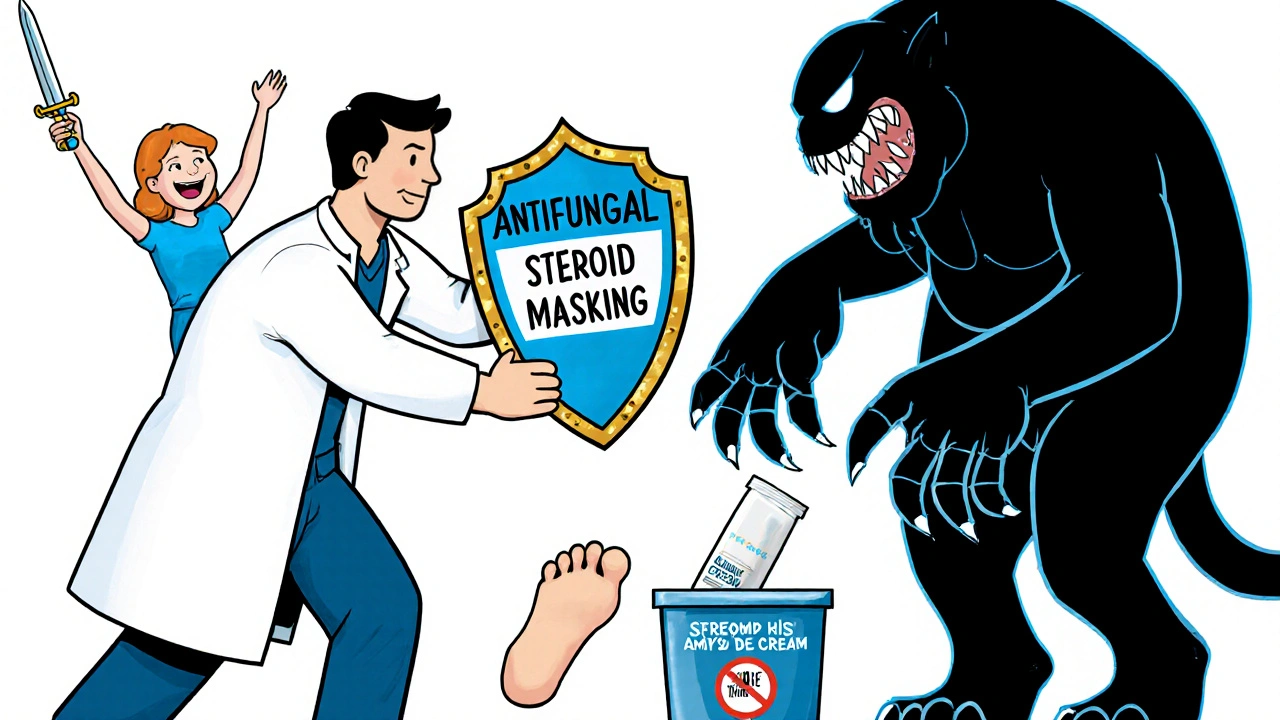
Real-life example: Sarah’s story
Sarah, 34, from Manchester, had athlete’s foot for 3 months. She used clotrimazole for 6 weeks. No improvement. Her skin was red, cracked, and blistered. She found an old tube of fluocinolone from her eczema and applied it twice a day. Within 48 hours, the itching stopped. She felt like a genius.
Two weeks later, the redness came back - worse. The skin between her toes was raw. Her big toenail turned yellow. She went to the GP. Diagnosis: chronic tinea pedis with secondary onychomycosis (nail fungus). She needed oral terbinafine for 12 weeks. She lost two months of running. She paid £180 for the prescription. All because she thought a steroid cream was a shortcut.
What to do instead
If you have athlete’s foot, here’s your simple plan:
- Buy terbinafine cream from the pharmacy. It’s cheap, effective, and doesn’t require a prescription.
- Apply it twice a day for at least 2 weeks - even if it looks better after 3 days.
- Keep your feet dry. Change socks daily. Use antifungal powder in shoes.
- Don’t walk barefoot in public showers or pools.
- If it doesn’t improve in 2 weeks, see a doctor. You might need oral medication.
Don’t reach for the steroid cream unless your skin is swollen, oozing, or you’ve been diagnosed with a severe allergic reaction. And even then - only use it with a proper antifungal and only for a few days.
Bottom line
Fluocinolone isn’t a treatment for athlete’s foot. It’s a temporary fix that makes the problem worse. It hides the symptoms, not the cause. The itch may go away, but the fungus doesn’t. And when it comes back - and it will - it’ll be stronger, harder to treat, and possibly spread to your nails.
Stick to antifungals. Be patient. Your feet will thank you.
Can fluocinolone cure athlete’s foot?
No. Fluocinolone is a steroid that reduces inflammation and itching, but it does not kill the fungus that causes athlete’s foot. Using it alone will not cure the infection and may make it worse by allowing the fungus to spread.
Is it safe to use fluocinolone with antifungal cream?
Only under a doctor’s supervision and for a very short time (3-5 days). Combining fluocinolone with an antifungal can help reduce severe inflammation in rare cases, but the steroid must be stopped quickly to avoid masking the infection and increasing the risk of recurrence.
What’s the best over-the-counter treatment for athlete’s foot?
Terbinafine cream (Lamisil) is the most effective OTC option. It kills the fungus, not just relieves symptoms. Apply it once or twice daily for at least 2 weeks, even after symptoms disappear. Clotrimazole and butenafine are also good alternatives.
Why does athlete’s foot keep coming back?
It usually comes back because the treatment was stopped too early, the feet weren’t kept dry, or the fungus spread to shoes or socks. Using steroids like fluocinolone can also cause recurrence by suppressing the immune response and letting the fungus grow unchecked.
Can fluocinolone cause side effects on the feet?
Yes. Long-term or improper use can thin the skin, cause easy bruising, delay healing, or trigger skin discoloration. The soles of the feet are thick, but repeated steroid use can still damage the skin’s structure and increase vulnerability to infection.


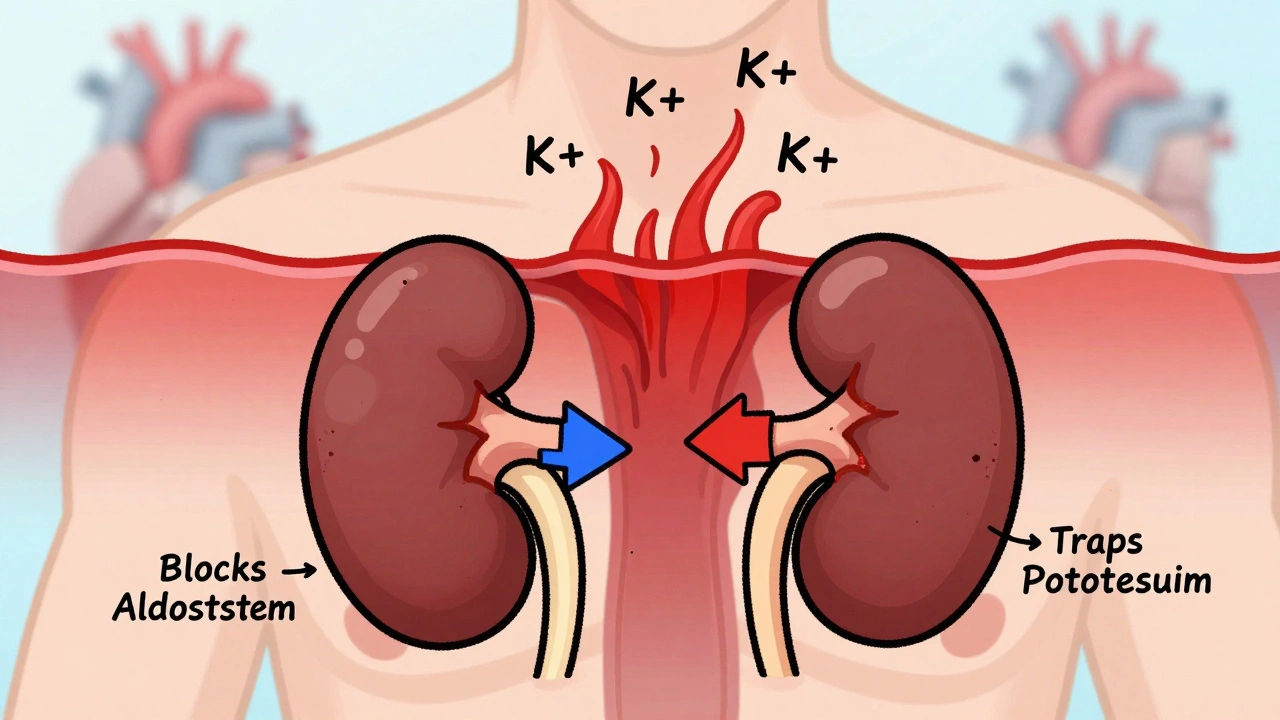
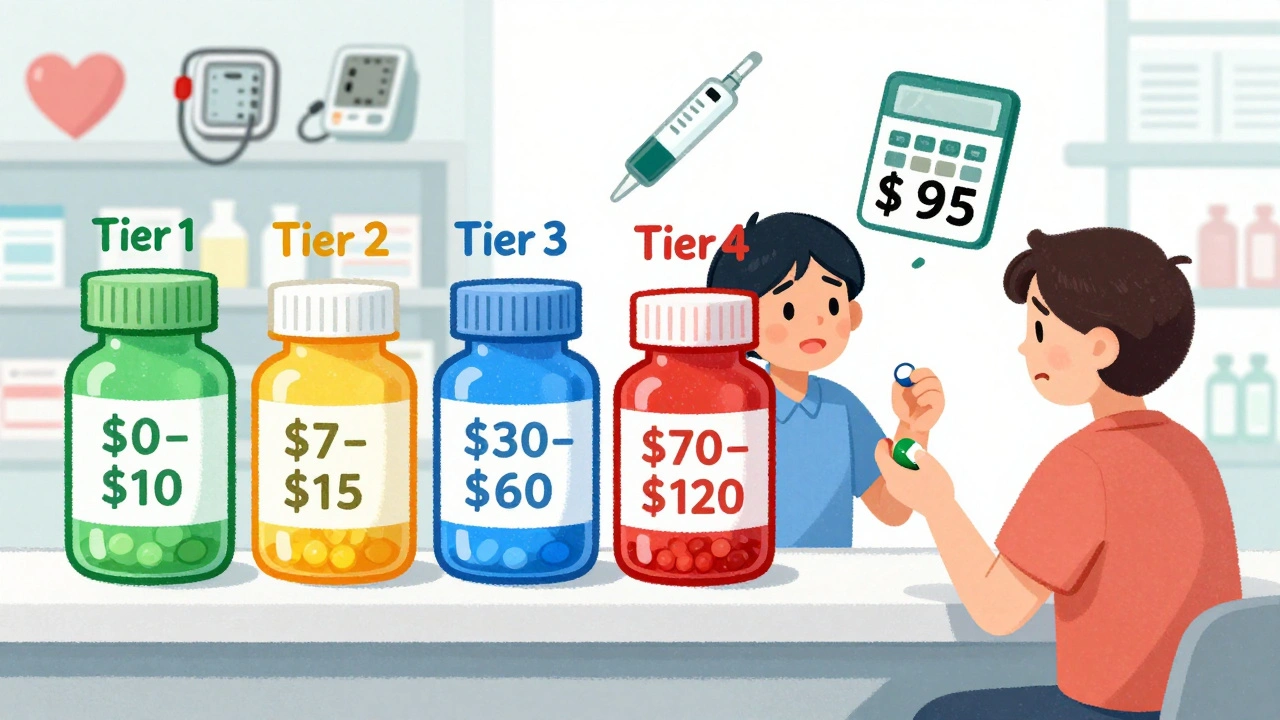
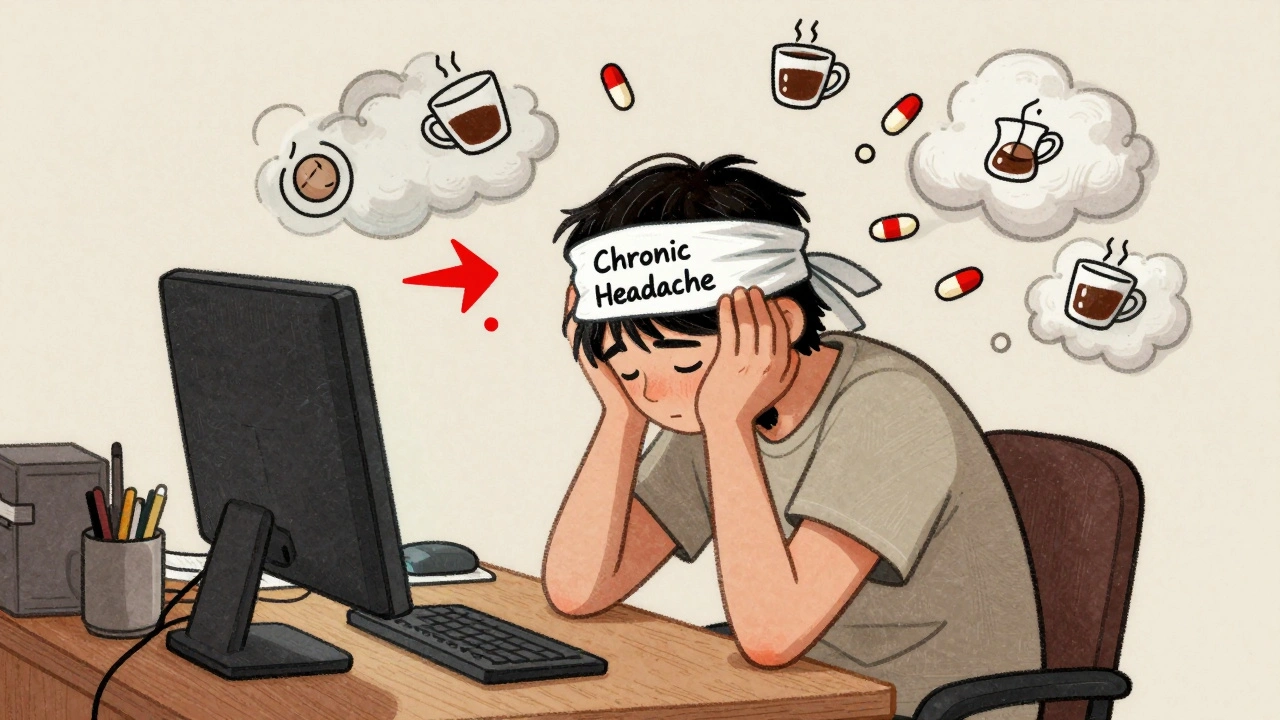
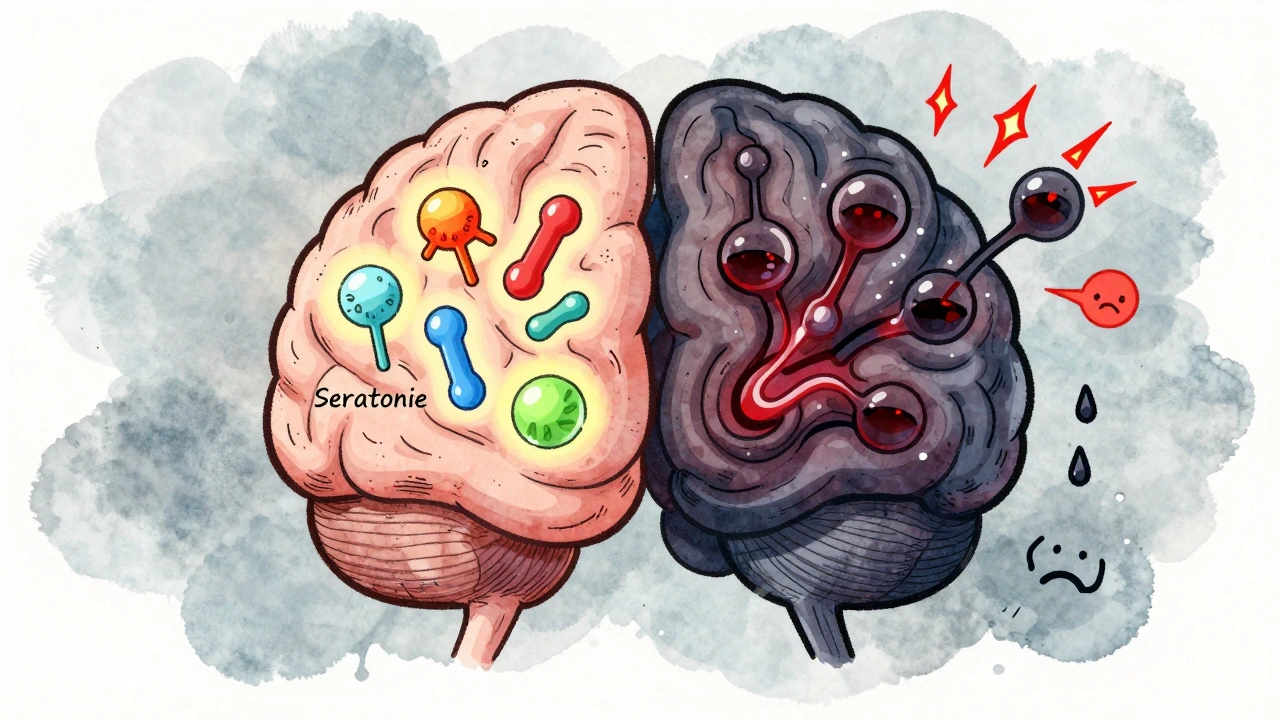
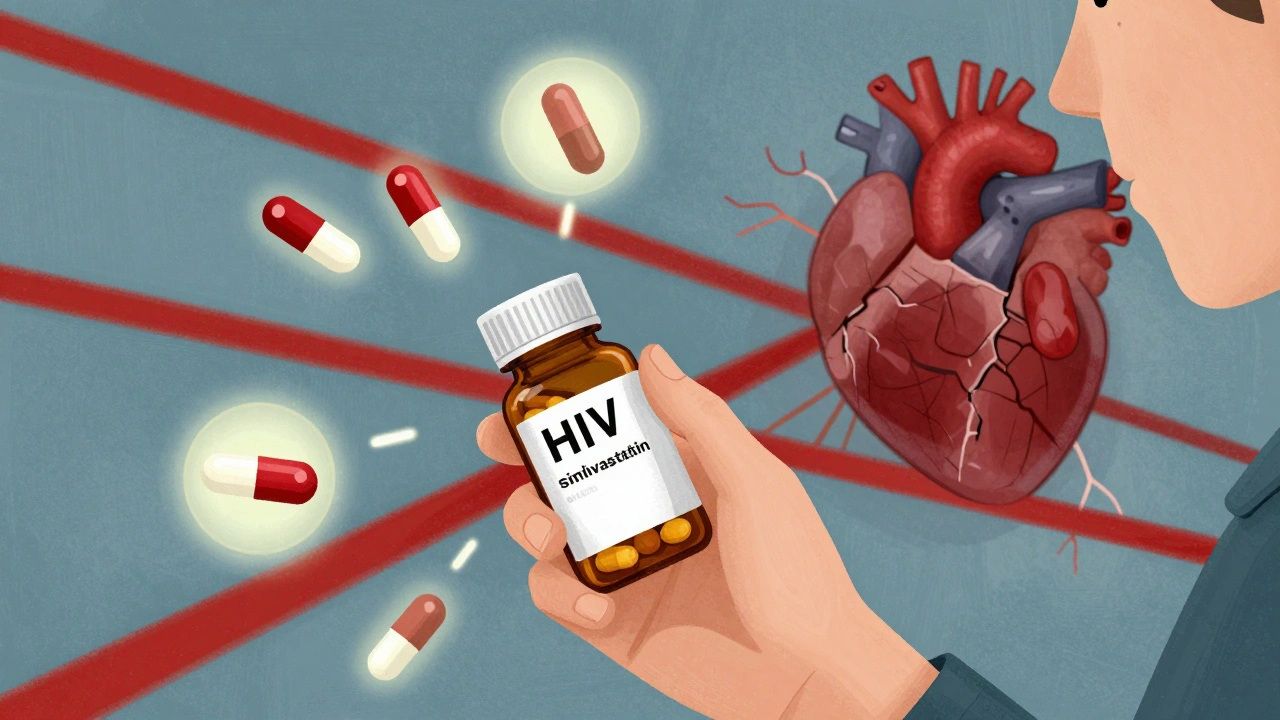
Emily Barfield
November 2, 2025 AT 20:45Oh my god, I can't believe people actually do this... I had a friend who used hydrocortisone on her athlete’s foot for months-she thought it was "just a rash"-and ended up with fungal nail infections on three toes... I swear, steroids are the silent villains of dermatology... They don't kill the enemy, they just make it invisible until it's too late...
Abigail Jubb
November 3, 2025 AT 04:46How tragic that the modern human has become so addicted to immediate relief that they willingly trade long-term health for a 48-hour illusion of wellness. Fluocinolone is not a remedy-it is a sedative for the skin’s rebellion. We have forgotten how to suffer through healing.
George Clark-Roden
November 4, 2025 AT 10:07I’ve seen this exact thing happen in my clinic-people come in with these terrifying, spreading rashes, and they say, ‘I just used the cream my dermatologist gave me for my eczema.’ And I have to tell them: you didn’t fix the problem-you just silenced the alarm while the house burned down. It’s not just about fungus-it’s about how we misunderstand our own bodies. We want the itch gone, not the cause gone. And that’s a cultural sickness, not a skin one.
Hope NewYork
November 6, 2025 AT 09:30lol why do doctors even exist if you can just use your old steroid cream? I used fluocinolone on my foot for a week and it worked great until my whole foot turned white and cracked. then i just slapped on more. now my toes look like they’re from a horror movie. also my dog licks them now and i think he’s got it too. send help.
Bonnie Sanders Bartlett
November 8, 2025 AT 00:49Terbinafine is the way to go. I had athlete’s foot for years, tried everything. Then I bought Lamisil at the drugstore, used it every day for two weeks, even after it stopped itching. My feet haven’t bothered me since. Just be consistent. It’s not glamorous, but it works.
Melissa Delong
November 8, 2025 AT 19:59Have you considered that the entire medical establishment is suppressing the truth about steroids? Fluocinolone has been used successfully for decades in alternative medicine circles. The pharmaceutical industry profits from repeated antifungal sales, so they discredit effective treatments. Why would you trust a study funded by a company that sells clotrimazole?
Marshall Washick
November 10, 2025 AT 09:11I used to think steroid creams were a quick fix until I saw my cousin’s foot after he used one for three weeks. It looked like parchment paper. He didn’t realize the fungus had spread to his ankle. He’s still on oral meds. It’s not just about the feet-it’s about how we ignore warning signs until it’s too late.
Abha Nakra
November 12, 2025 AT 02:02In India, we have a traditional remedy: neem oil and turmeric paste. It’s slow, but it works. But I agree-steroids are dangerous for fungal infections. I’ve seen too many people in my village ruin their skin with over-the-counter creams. The real solution is patience and hygiene. Wash feet daily. Dry between toes. Change socks. Simple, but no one wants to do it.
Neal Burton
November 12, 2025 AT 16:27You know what’s really sad? That this post is necessary. That people are still this clueless about basic dermatology. I’ve been a dermatology resident for seven years, and I still get patients who say, ‘But the cream made the itching stop!’ And I have to explain, again, that the itching stopping doesn’t mean the fungus died. It means your body stopped screaming. And now the fungus is throwing a party on your skin.
Tamara Kayali Browne
November 12, 2025 AT 17:24According to the British Journal of Dermatology study, the steroid combo group had a 68% cure rate versus 92% for antifungal alone. That’s a 24% difference. The number of patients was 142. The p-value was <0.01. The statistical significance is robust. The clinical implication is clear: steroids increase recurrence. No interpretation needed. Stop self-medicating.
Nishigandha Kanurkar
November 14, 2025 AT 13:20Fluocinolone is a government experiment! They want us to get chronic fungal infections so we’ll buy more drugs! And the Cochrane review? Paid for by Big Pharma! My cousin used fluocinolone and then her whole leg swelled up-she had to go to the ER! They said it was ‘fungal cellulitis’-but I know what really happened. They’re hiding the truth. Steroids are safe if you know how to use them-just don’t tell anyone!
Lori Johnson
November 15, 2025 AT 10:01Okay but like… I used fluocinolone once and it worked so good I cried. I thought I was cured. Then it came back worse. I’m not mad, just… disappointed? Like, I trusted the cream. I thought it cared. I guess I just needed to be more patient. Thanks for the post, I’m buying Lamisil today.
Tatiana Mathis
November 16, 2025 AT 01:40This is one of the most thoughtful, well-researched, and necessary posts I’ve read in months. The way you broke down the difference between symptom suppression and actual treatment is exactly what public health messaging needs. People don’t understand that inflammation is a signal-not the enemy. Steroids silence the signal, and then we mistake silence for peace. But the infection? It’s still there. It’s still growing. And it’s still waiting. Thank you for speaking truth with clarity, evidence, and compassion. I’ll be sharing this with my entire family.
Michelle Lyons
November 17, 2025 AT 21:15Wait-so you’re saying the government and big pharma are pushing antifungals to make money, but steroids are secretly the real cure and they’re hiding it? But then why does the study show higher recurrence? Maybe the study was fake? I read on a forum that fluocinolone is used in military bases to control outbreaks. Maybe it’s a cover-up?